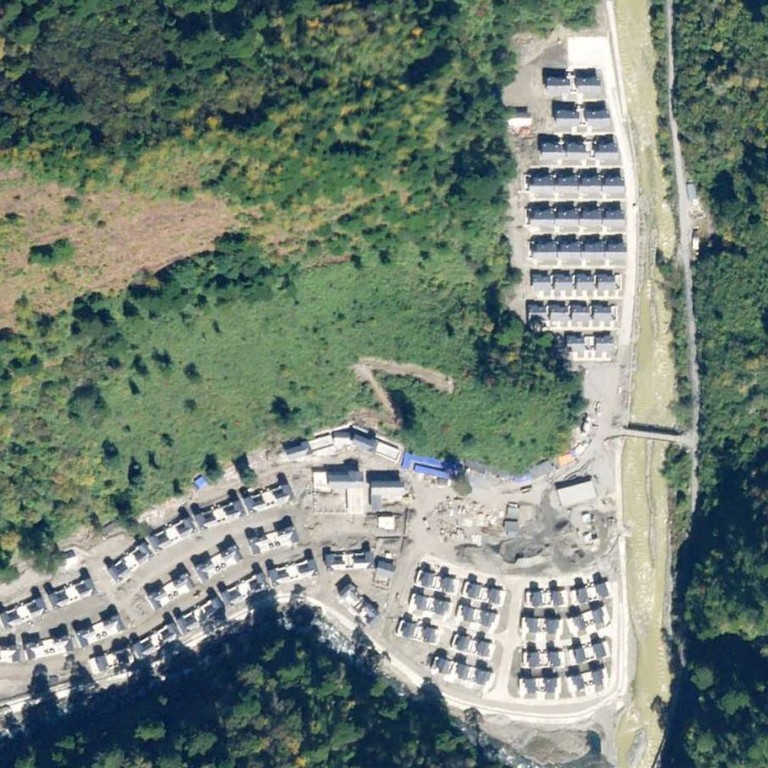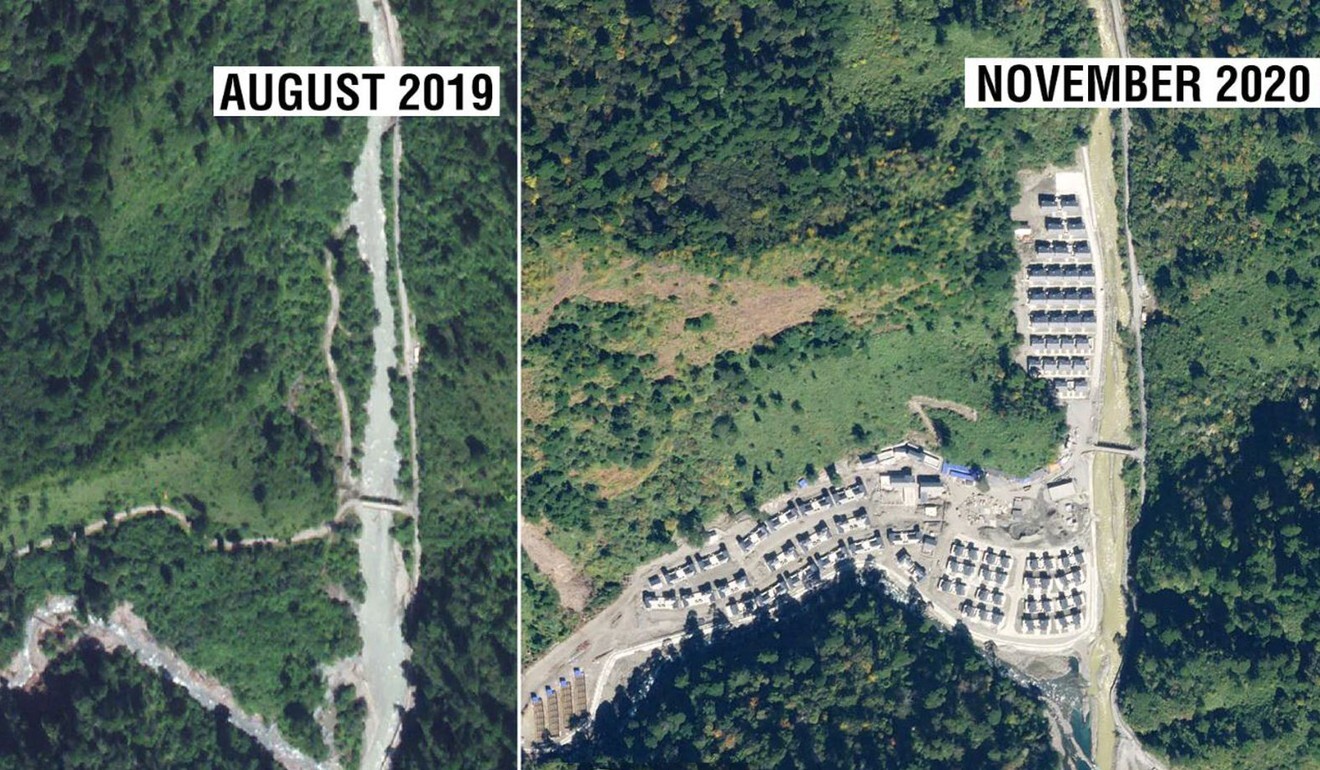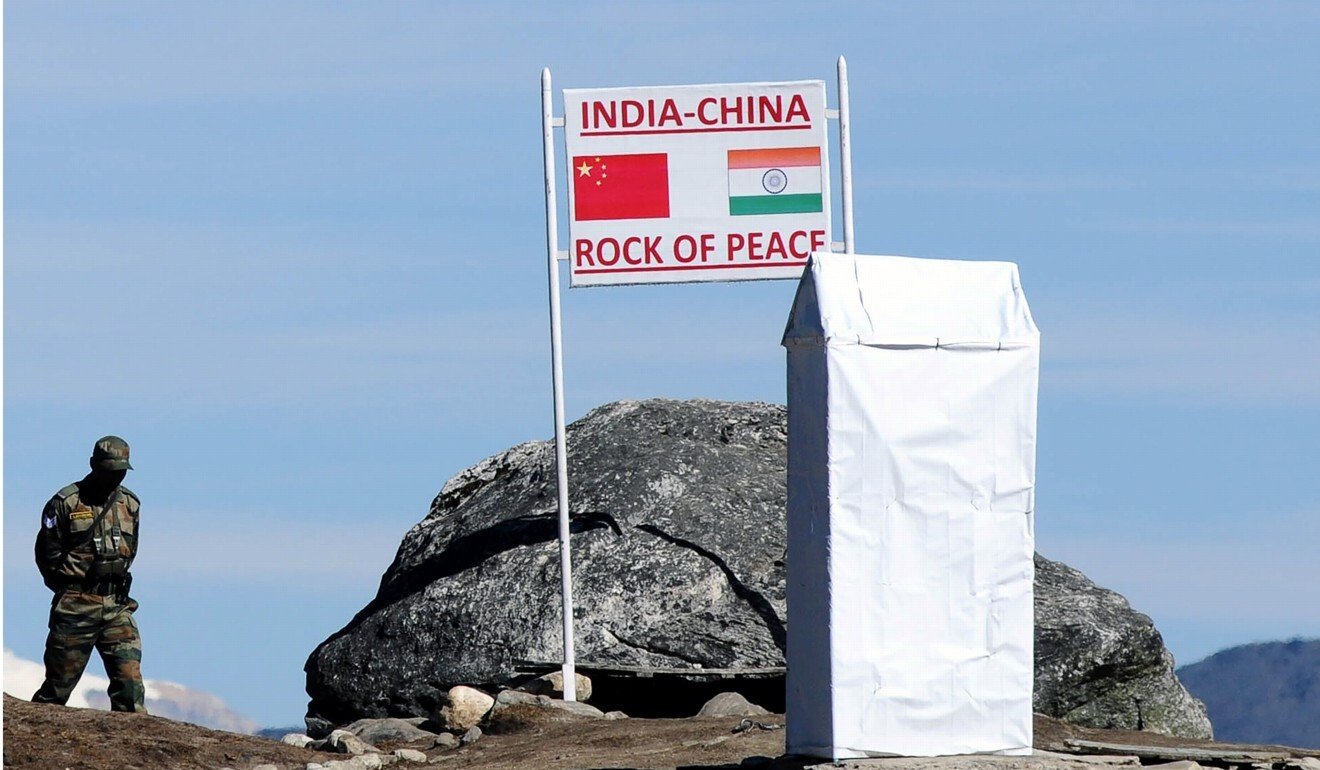
China-India border dispute: village built in conflict zone part of Beijing’s poverty alleviation scheme, source says
- Person close to Chinese military says development of about 100 houses was built within China’s territory as part of a nationwide poverty alleviation scheme
- But Indian academic says Beijing’s house building schemes in disputed areas are just another example of its “aggressive expansionism”
The development of new roads for use by the military in the area provided a “good opportunity to build houses for local Tibetans using poverty relief money,” said the source, who asked not to be named as he is not authorised to talk to the media.
The development is located on the banks of the Tsari Chu river and comprises about 100 houses, according to pictures shown on Monday by Indian broadcaster NDTV and dated November 1, 2020.
It is not known exactly when the properties were built, but satellite images of the same area taken in August 2019 show it to be grassland. A report by Chinese state news agency Xinhua said most of the houses were built in October last year.
Arunachal Pradesh is regarded by New Delhi as an Indian state, but Beijing claims about 90,000 square kilometres (35,000 square miles) of it as South Tibet.
China and India have been in a border dispute over the Line of Actual Control for decades, and tensions flared in June last year when soldiers from the two sides became embroiled in a deadly clash far to the west in the Galwan Valley. There has been an uneasy stand-off in the area ever since.
The Ministry of External Affairs in Delhi said it was aware of “reports of China undertaking construction work along the border areas with India”.
India had also stepped up the construction of border infrastructure, including roads and bridges, to improve lives of the people of Arunachal Pradesh, it said.
Chinese foreign ministry spokeswoman Hua Chunying said on Thursday that all construction activity had been within China’s territory.

According to a 2017 document, Beijing plans to build 624 villages on the disputed border as part of its poverty alleviation scheme and to ensure political stability in the Tibet autonomous region.
China’s military uses new all-terrain vehicle to get supplies to troops in Tibet
Zhang Jiadong, director of the Institute of South Asia Studies at Fudan University in Shanghai said that in recent years both China and India had tried to expand their presence in the disputed region.
“Ways of doing that include guiding residents to live closer to the border and building roads, bridges and civil facilities,” he said.
Both sides were trying to exert their control over the border and neither was willing to make any concessions, he said.

Zhu Yongbiao, a professor of international relations at Lanzhou University, said that describing the development as China building a village was wrong as the area had always been residential.
“China has just upgraded the living infrastructure, building new facilities such as communications facilities and water sanitation facilities, to improve living standards,” he said.
Lin Minwang, a professor at the Institute of International Studies at Fudan University, said the development of the village was not about antagonising Delhi.
“The construction of the village and infrastructure upgrades are not movements that target India, but a long-standing policy of China to solve the issue of human resources loss in border areas, which can be a threat to border security,” he said.
China-India border dispute: PLA ‘has built frontline observation post’
However, Indian media reports in December used satellite images to show that a new Chinese development in Pangda – about 10km (six miles) east of the India-Bhutan-China trijunction – had been built 2.5km inside Bhutan’s territory.
Brahma Chellaney, a professor of strategic studies at the Centre for Policy Research, a think tank in Delhi, said Beijing’s village-building activity in the disputed Himalayan region was further evidence of its aggressive expansionism.
“The civilian settlements are designed to create a basis in international law for its territorial claims, which currently lack a sound legal standing,” he said.


